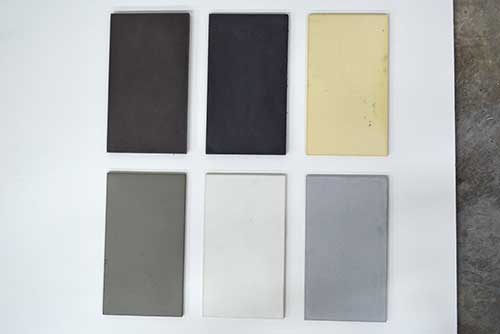Whether remodeling an outdated kitchen or building a new home, one of the most impactful design decisions is choosing your countertop material and colors. Concrete countertops have risen greatly in popularity in recent years as both a stylish and durable surface choice. However, with concrete's many color and finish options, it can be difficult to determine which ones are best suited to your lifestyle, interior style preferences, and lighting conditions.
In this post, we will explore the different concrete colors available and help you determine which hue or technique may work best for your unique needs and home. From warm neutrals to bold industrials, we'll break down the pros and cons of popular concrete countertop coloring techniques so you can make an informed selection to accentuate your space for years to come.
Concrete Countertop Coloring Techniques
Concrete countertops are gaining popularity among homeowners because of their resilience and distinctive appearance. Nevertheless, some people may find the color of concrete too monotonous. The good news is that there are several methods to add color to concrete countertops. Whether you want a subtle or vivid appearance, there is a concrete countertop coloring technique that can help you achieve the desired effect.
Integral Pigments
Color is a crucial aspect of any design, and when it comes to countertops, integral pigments are the preferred choice for achieving a wide range of hues. By blending different pigments, skilled craftsmen can create almost any color, providing limitless possibilities for customization.
While color matching is not an exact science, the stability of pigments guarantees consistent and dependable results as long as precise measurements are taken. Whether you're seeking a bold statement piece or a subtle touch of color, integral pigments offer a reliable solution for realizing your aesthetic vision.
Acid Stains
Acid stains are a great way to give your concrete countertop a unique look. Although the range of colors available may be limited, you can mix the products to create new shades. The chemistry of acid stains is unique, which means that the outcome can be unpredictable. Therefore, it is essential to seek the help of a professional.
Over time, the color of the acid stain can fade due to abrasions, even with proper application. However, sealers can help extend the life of the stain. These colorants can be used both indoors and outdoors as they are UV stable. When used correctly, acid stains can provide a beautiful burst of color to your concrete countertop.
Dyed Concrete
When it comes to designing concrete surfaces, dyes and stains are a popular option due to their incredible versatility. These products are available in a stunning range of colors and can be mixed and layered to create unique effects. Unlike integral pigments, dyes and stains don't need specialized mixing during the concrete pouring process - they can simply be applied to the surface after the concrete has cured. This makes them more cost-effective than using integral pigments while still achieving a similar visual result.
Using dyes and stains, it's possible to create intricate designs with stencils or use them as accent colors. The possibilities for enriching concrete surfaces are truly endless.
Things to Consider When Choosing A Color for Your Concrete Countertops
Choosing a color for your concrete countertops can be exciting and overwhelming all at once. With so many options to choose from, it's important to prioritize your personal preference above all else. While there are many things to consider, such as the style of your kitchen, the amount of light the room gets, and your overall design aesthetic, at the end of the day, it's your countertop.
Choosing a color that speaks to you and makes you happy is crucial because you'll be looking at it every day. So take your time and really think about what color will bring you joy every time you step into your kitchen.
Resale Value
When selecting a color for your concrete countertop, it is important to consider more than just your personal preference. While you may prefer a vibrant and bold hue, it is important to think about the potential resale value of your investment.
If you plan to sell your home soon, you should choose a color that will appeal to potential buyers and leave a great first impression. Your goal should be to select a countertop color that enhances your home's overall appeal and adds value to it. Therefore, take your time to explore different options and find a color that will make your countertop stand out in a positive way.
Color Matching
Choosing the right color for a concrete countertop can be challenging, especially when attempting to coordinate it with the other elements in your kitchen. However, finding an exact color match can be difficult when using colored concrete. Rather than getting overwhelmed with the task of finding the perfect shade, consider going for a color range that complements your overall design.
This approach will not only save you time and money but will also create a cohesive look in your kitchen. With careful planning, you can create a stunning and functional concrete countertop that blends seamlessly with the rest of your space.
Complementing Pattern or Finish
When choosing a color for your concrete countertop, it's essential to consider matching the pattern or finish to achieve a stunning outcome. If you have chosen a stamped concrete finish rather than a steel trowel finish, it might be worth including an antiquing agent that produces a contrasting highlight color. This will not only add a touch of realism to your countertop but also create a beautiful two-tone effect that will undoubtedly impress.
The perfect countertop is all about the subtle details, so take your time to think about the finishing touches that will elevate the overall look and feel of your space.




